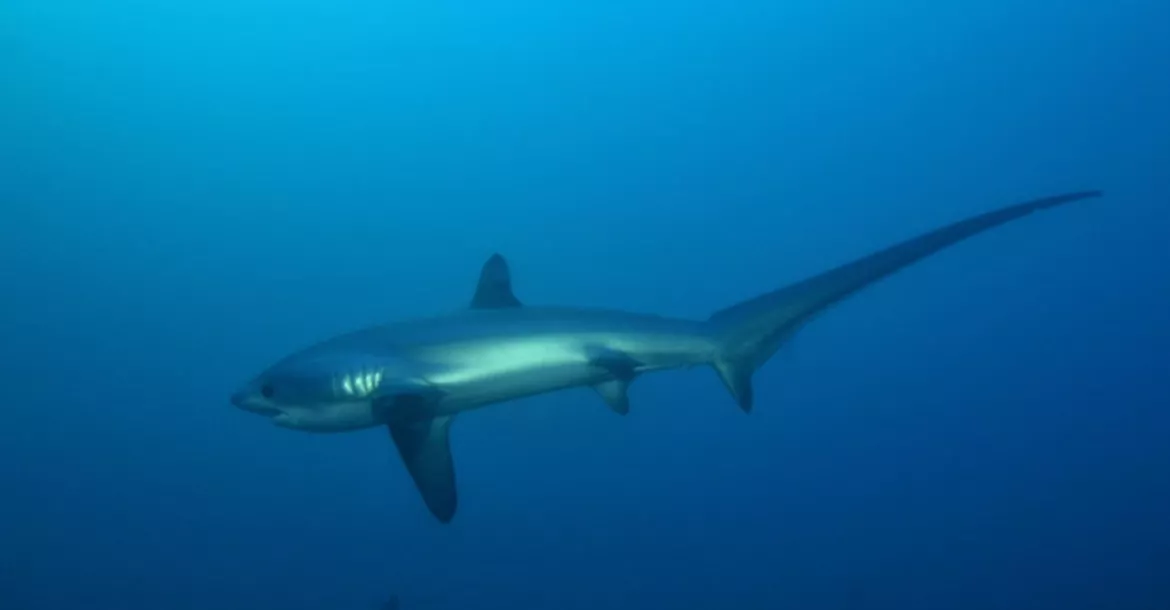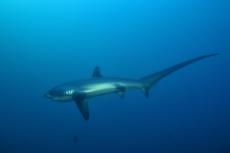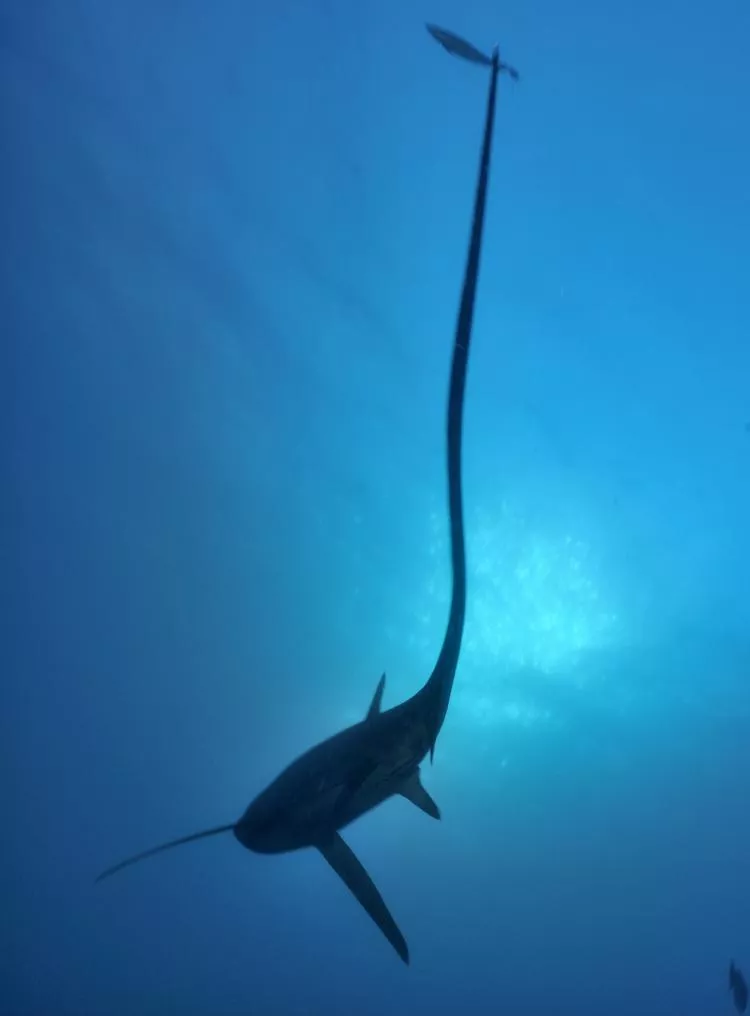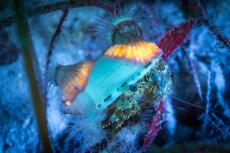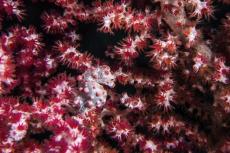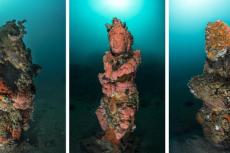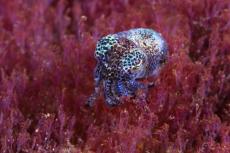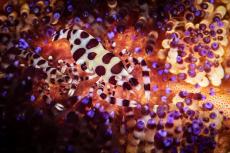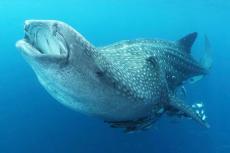The fox shark, also called the common thresher shark, lives usually at depths of over 200 meters and it is sighted only rarely. This is the main reason, we don’t know very much about these animals, and there is very little good visual documentation showing thresher sharks up close on camera.
Contributed by
Attracted by several cleaning stations, the sharks come regularly before sunset for their early morning “toilette”. They are cleaned by the small cleaner wrasse that clean the sharks' skin, gills and even inside their mouths of parasites, bacteria and food debris.
Due to this behavior, it also makes it necessary for observers to be there on time as well, because it is the only chance to see and approach this shark to photograph it.
Photographing threshers
For a week now, I'd been getting up at 04:30 each morning in order to get some good shots of a thresher shark. On each dive at the Plateau I site, I saw some of them in the distance, but due to bad visibility, pictures taken were blurred.
I wanted to get photographs in which the image of the animal was sharp and had good contrast, but this required that there be not more than two meters between shark and photographer—as well as lots of luck! But patience and perseverance is a prerequisite for a wildlife photographer.
So now, I found myself again swimming confidently through the dim twilight to the edge of the plateau. Today, we’d try a different spot, a place deeper and further away than the previous ones. Down there we would remain for 60 to 70 minutes, motionless and observing the blue-green horizon for the distinctive silhouette of the thresher shark.
We were located right on a steep wall dropping to over 200 meters below us. But instead of sharks appearing, just swells of very cold water arrived from the depths below. I wished I'd had a few more millimeters of neoprene on my body.
Already 50 minutes had passed, and thanks to nitrox 40/60, we were still good on bottom time. Around us, it was noticeably brighter now. I was still hopeful and set the camera to these new light conditions—to be prepared just in case.
But now something seemed to be happening in the blue-green infinity—a dark shadow appeared, still hazy but slowly more and more clear. Suddenly a huge, approximately four-meter thresher swam right up to me!
Rushing adrenaline replaced, within seconds, the chill of the morning—certainly not for fear of the sharks, but rather the pressure not make any mistakes, either technically or behaviorly, and risk losing this incredible chance. But the old routine came flowing back after a few seconds, and I followed all the action through the viewfinder of my camera.
The shark approached slowly but surely. Then suddenly, something strange happened. In less than three meters off camera, with its pectoral fins laterally turned, the shark stopped abruptly and remained almost motionless for a split second right in front of me— I pull the trigger!
I prayed to all the gods of the Philippines that the shark would not back off and disappear, never to return again. Fortunately, this was not the case. Then, almost from a still stop, the shark suddenly shot past me, over me and turned 180 degrees around, only to disappear to whence he had come.
During the whole shark encounter, I wasn't breathing at all—and for good reason—but now I had to rinse out my lungs with such vigor that all the fishes, and I guess also all the sharks, in the area escaped in a panik. But by now I didn't care—I had the “Thresher” in my box! Tomorrow I could sleep longer. ■
For more information, please visit Kurt Amsler’s website at: www.photosub.com

